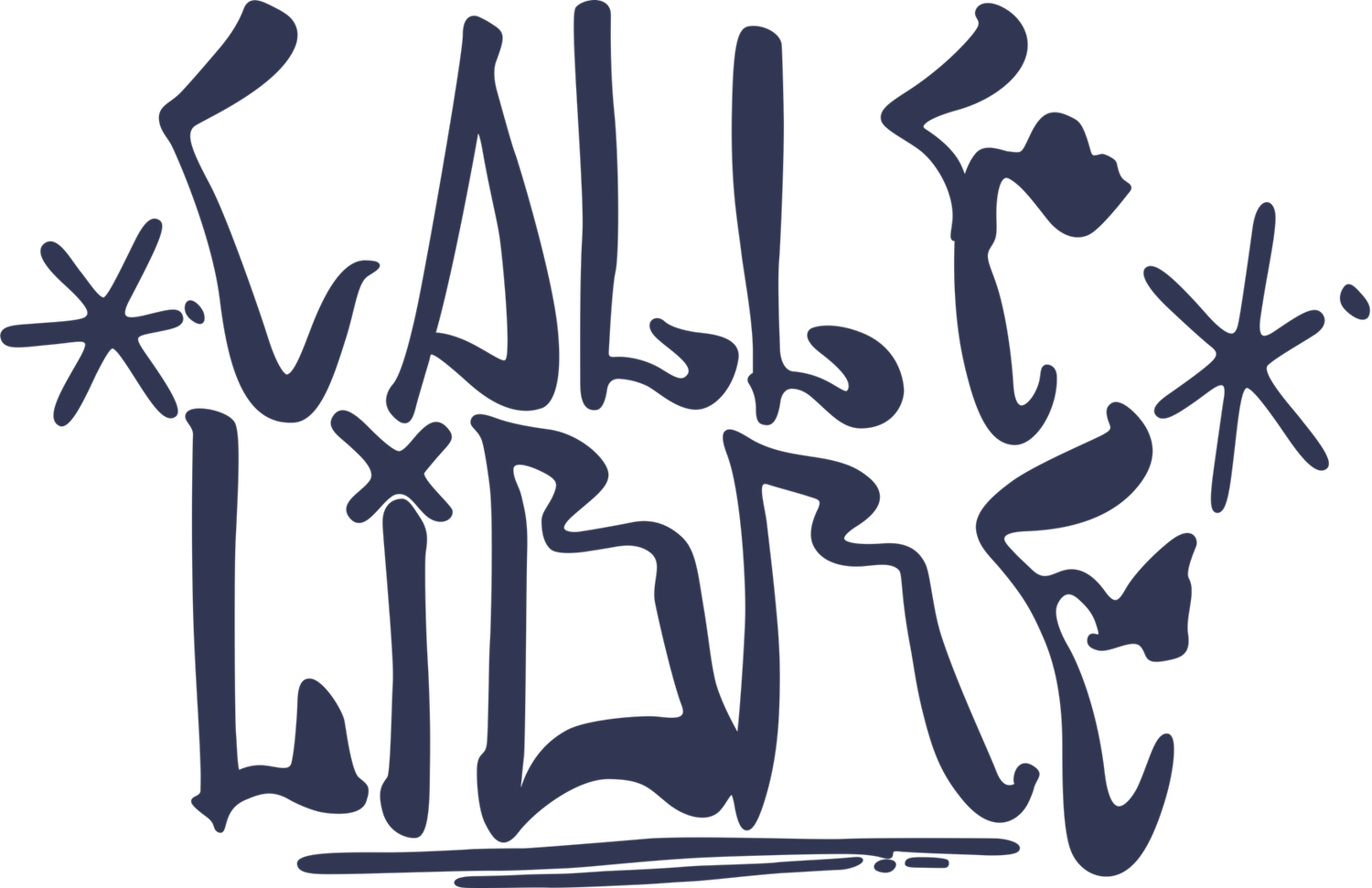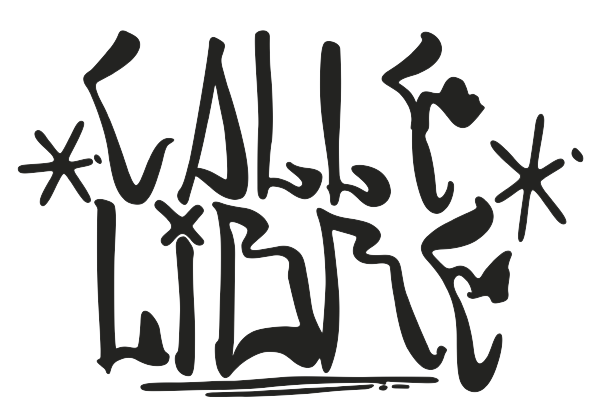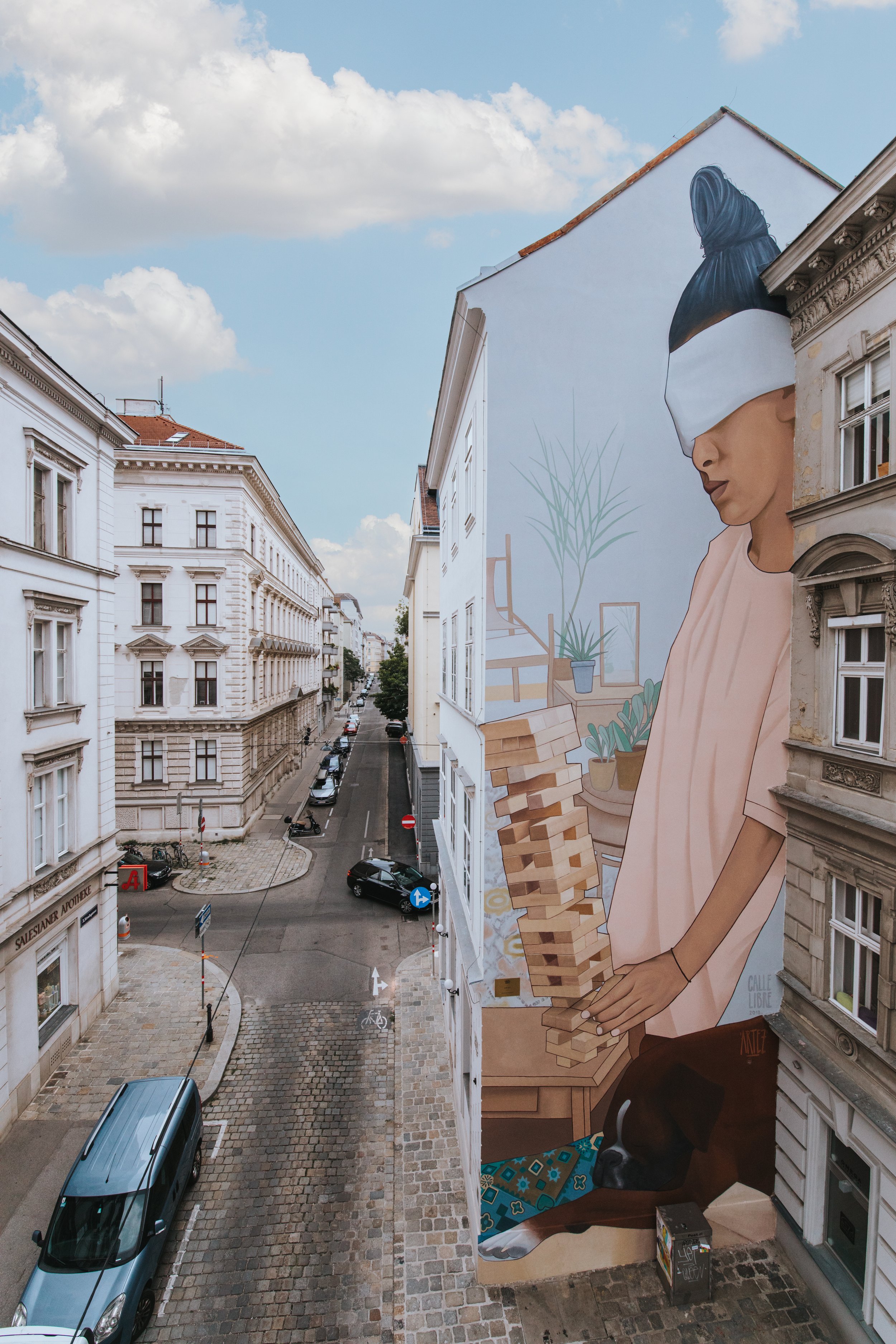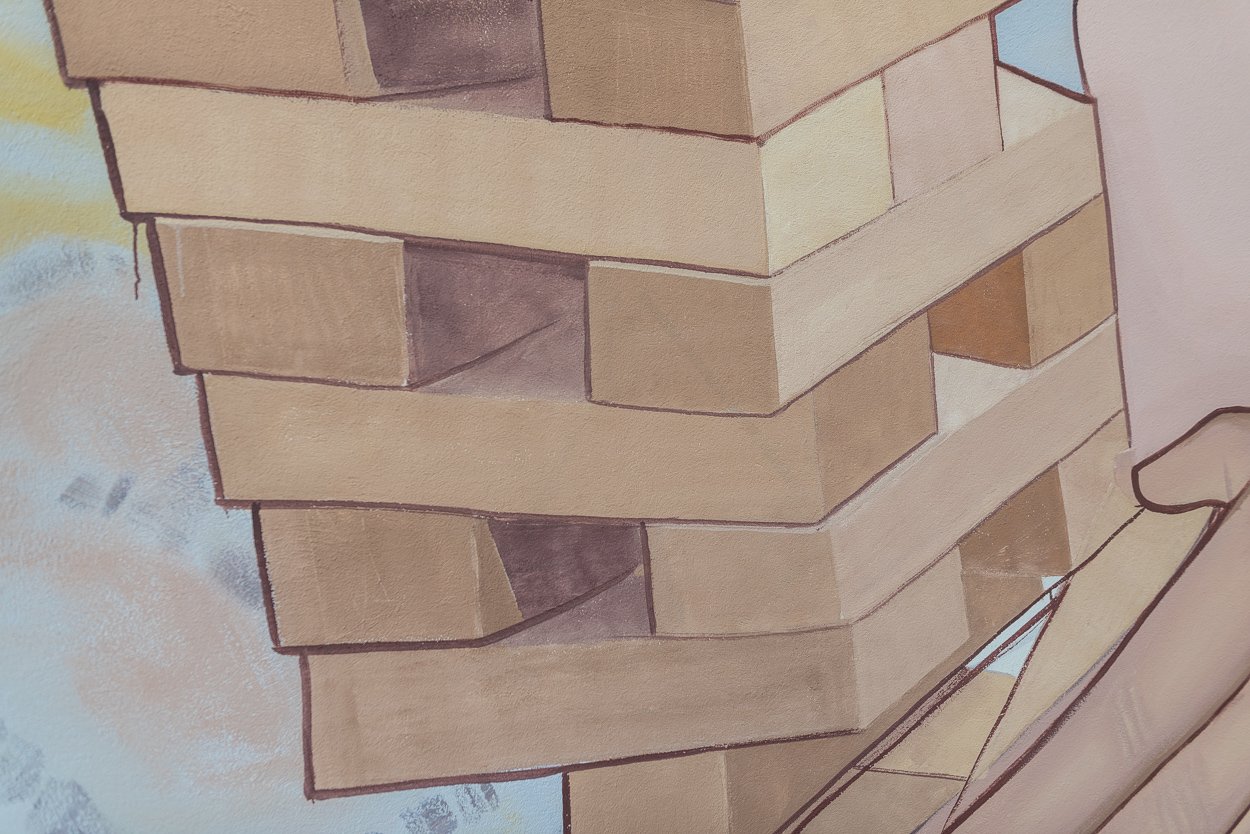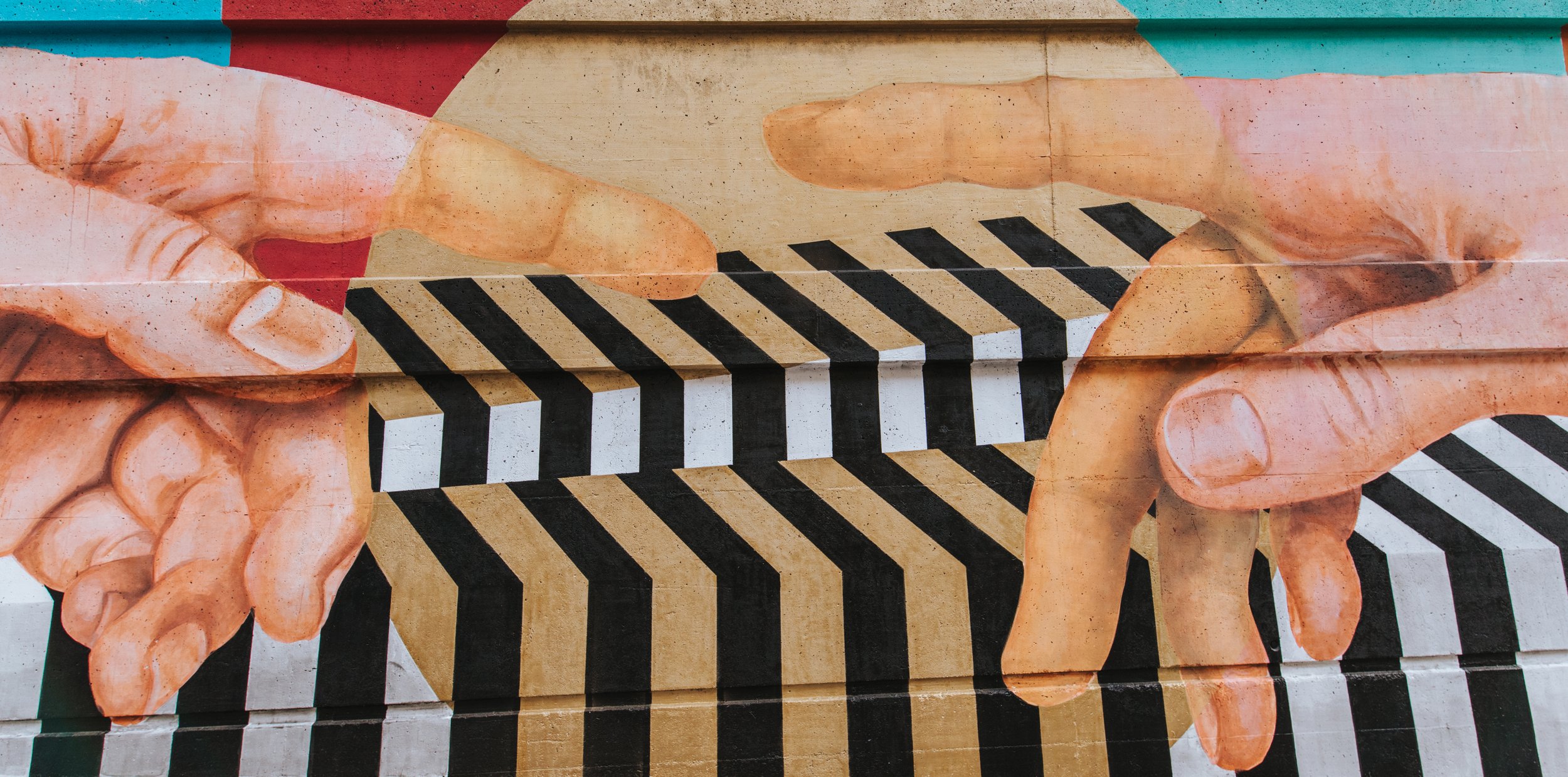2018: Cinco
featured artists
Artez
Dead Beat Hero
Edward von Lõngus
Jacoba Niepoort
Jose Urteaga
Kobra
Kruella D’Enfer
Lost Optics
Medianeras Murales
Moiz
Renacho Melgar
Saddo
Zësar Bahamonte
Estonia
Edward’s figures appear all over Europe’s major cities. His stencil-made black and white pieces that he paints in Vienna can be transformed into moving images by using an Augmented Reality App. Watching the wall through your smartphone shows you mysterious Estonian personalities who can be brought to life. His characters appeared at various spots throughout the city. They try to establish a new concept which allows you to use digital technology with the artwork in the streets.
The search for creativity. This mural is a tribute to the creative process, as well as to the work and inspiration of previous master artists from Vienna. It portrays a woman, overturning rocks, searching for her long lost 'sons' of creativity at the bottom of a river.
Netherlands
The image is inspired by an old folklore tale (La Llorona) among which one interpretation is the searching for creativity in a river (or soul/body) blocked or muddied by life’s constant internal and external challenges and distractions. One could see the search as part of the never-ending cycle of the creative process. The backdrop to the mural is Koloman Moser’s artwork, an artist who among others from the Vienna Secession, died 100 years ago .
Peru
Mirrors. While in Vienna he created a series of interventions on the street with stencil and mirrors. The idea of these pieces was to interact with the viewer using simple and di- rect phrases and include their reflection in the composition. Jose Urteaga uses the pseudonym of NAF in the urban interventions he has been doing for more than 15 years in different cities around the world.
Brazil
In his first work performed in Austria, the Brazilian artist Eduardo Kobra used his style and his colors to celebrate two of his main inspirations, two great Austrian painters. Kobra decided to reinterpret the famous photograph of Klimt with his cat, Katze. With an interesting detail: they will be standing on the roofs of Schiele's famous Krumau - Crescent of Houses (The Small City V).
"Having been invited to paint in Austria, such an import- ant place for the world culture, inspired me to make a reference to two Austrian artists that I greatly admire. Therefore, I planned this connection between both.”
Laying Girl. Kruella’s illustrative style always has a strong context of the environment where it ́s painted. In her extravagant paintings, she evokes surrealistic visual worlds and always leaves a question open for the spectator.
The Portuguese artist paints an homage to one of Austria’s most notorious figures in art history: Egon Schiele.
In her colorful interpretation of Egon Schiele ́s painting “Am Bauch liegender weiblicher Akt“ from 1917 she also adds a self-portrait of the painter in the right corner on the top of the wall. While the left half shows colorful abstract elements that resemble oral patterns and plants, the right half of the wall shows a dark horizon sprinkled with distant stars. Her use of contrasting colors and geometric shapes sharpens this collaborative wall referring to the 100th anniversary of the artist’s death.
The artist was invited to participate in the festival with the support of the Portuguese Embassy in Vienna.
Abstract Algorithm. His abstract figurations are often only perceived well from a certain kind of angle. During the festival, he painted in the middle of the sixth district a stairway which appeared in various color patterns and depth perceptions depending on where you stand. In his neo-constructivist style, his abstract structures make you think of letters deconstructed in the form of geometric shapes. His dynamic components make a non- figurative composition so powerful that even Malewitsch might have found favorable.
Romania
Cuerpo de ciudad. The idea for the piece that was created in Vienna emerged a proposal of the festival's organizers, who suggested the possibility of respecting the graffti that were already painted on the wall. For this reason, Medianeras decided to interpret the message of the graffiti artists. as a reference to the world-famous
The idea was to paint the tags and graffiti on a body with outstretched arms, like tattoos over this painted body. This mural will represent the idea that graffiti is like the skin of cities. The artistas chose the challenge of incorporating existing graffiti respecting this urban community.
In the middle of the wall we see two fingers which could be interpreted as a reference for the world-famous “The creation of Adam” Fresco painted by Michelangelo in the Sistine Chapel.
Argentina
The Big Five. Saddo decided to illustrate the so-called “Big Five”, the main mass extinctions in Earth’s history, through one representative species that found their demise in each of the five events.
He implements sea creatures, the trilobites, the tabulate corals, conodonts, and dinosaurs.
Romania
Spain
Maestro. You can easily recognize the work of Zësar. His expressive colors and the depiction of his unique characters make him an outstanding representative of the Spanish street art scene. .
Oscillating between Uruguay and Spain, he travels often to participate in festivals. On his wall at Ludwig Hirsch Park, he painted a homage to Gustav Klimt and Egon Schiele, depicting two figures simulating Schiele himself with one of Klimt's muses.
Next to them, Zësar puts a guitar down, referring to the late Ludwig Hirsch, who was a famous Austrian musician.
In the image, Zësar represented a male figure imitating the anatomies of Egon Schiele and a female figure more focused on the style of Klimt’s anatomies. The two overlap as a metaphor for the relationship between creators, and as it is always positive to get together among individuals, these new colors are the metaphor for the new things we discover when we mix with each other.
& other

